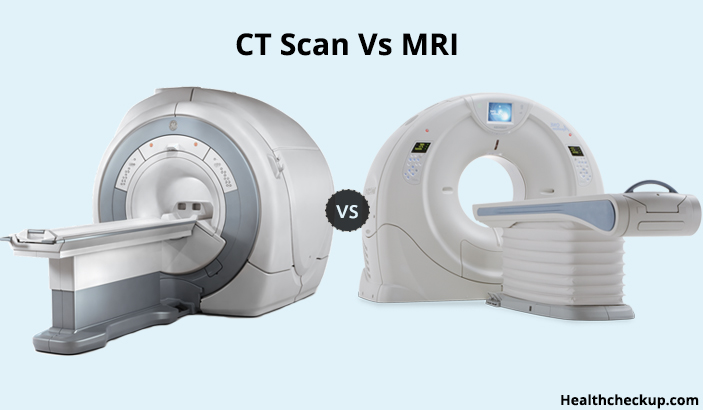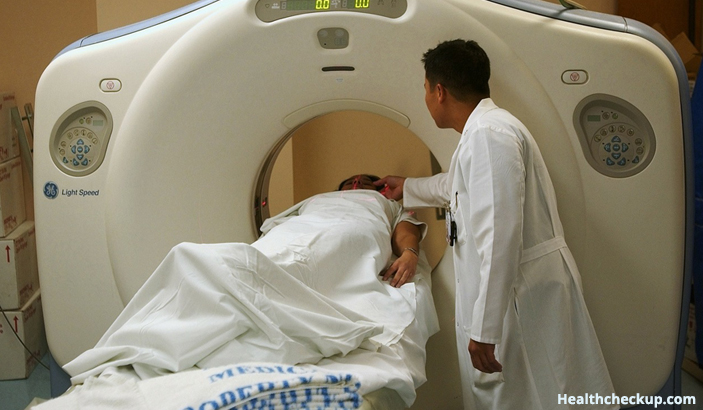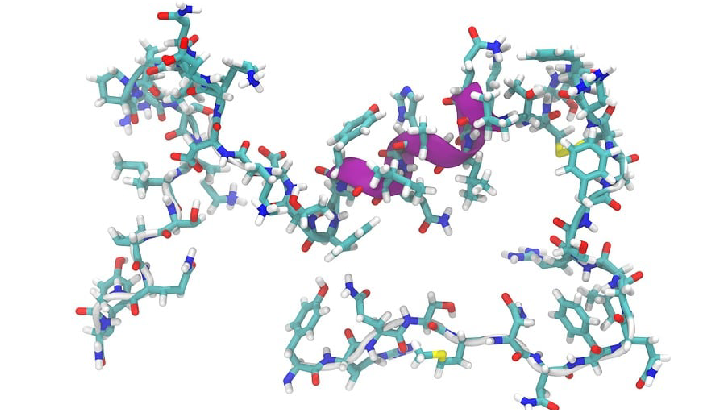CT scan vs MRI: What is the difference? A CT Scan (or CAT scan) is finest matched for diagnosing bone injuries, identifying lung and chest difficulties, and sensing cancers. An MRI is appropriate for investigating soft tissue in ligament and tendon injuries, brain tumors, spinal cord injuries, many more. An MRI, on the other hand, can take more than 30 minutes.
An MRI characteristically costs more than a CT scan. One benefit of an MRI is that it does not use radiation whereas CT scans do. This radiation is sometimes harmful if there is frequent exposure.
How MRIs Work?
By means of a very influential magnet and pulsing radio waves, the recognition coils in the MRI scanner read the energy formed by water molecules as they readjust themselves subsequently each RF alignment pulse. The composed data is rebuilt into a two-dimensional design via any axis of the body. The bones are almost deficient of water and hence do not produce any image data. Actually, this will leave a black area in the images. The MRI scanners are the perfect suit for soft tissue imaging.
How Does a CT Scan Work?
Computerized Axial Tomography that is CT, mainly uses x-rays to produce body images which also includes bone. In the CT scanner, the x-ray tube rotates about the patient laying on the table. On the opposite side of the patient from the tube is the x-ray detector. This detector obtains the beam which makes it via the patient. The beam is then tested through some 764 channels, which is the approximate number of channels. Here the signal established by each channel is digitized to around 16 bit value and directed to the reconstruction processor.
Measurements are generally taken around 1000 times per second. Scan rotations are generally 1 to 2 seconds long. Each view/channel break apart of scan data is associated to calibration scan data of water, air, and polyethylene which is a soft plastic, formerly developed in the same relative location. The evaluations let the image pixels to have a recognised value for a specific material in the body irrespective of changes in patient size and introduction influences. The more models or views, the improved the picture.
Advantages of MRI over CT Scan
A CT scan uses X rays to shape up a picture. MRI uses a magnetic field to do the same and has no known side effects associated to radiation exposure. MRI provides advanced detail in soft tissues.
The greatest advantages of MRI is the capability to alter the contrast of the images. Minor changes in radio waves and magnetic fields can totally change the image contrast. Different contrast situations will high point different types of tissue.
The additional advantage of MRI is the capability to change the imaging level without touching the patient. Maximum MRI machines can produce images in any plane.
Contrast agents which are not made up of iodine are also used in MRI. Generally, there are less documented cases of reactions to MRI contrast and it is considered to be safer than X-ray dyes.
For purposes of tumor detection and identification, MRI is usually superior. Nevertheless, CT typically is more extensively available, faster, much less expensive, and maybe less probably to need the person to be sedated or anesthetized.
CT may be improved by use of contrast agents comprising elements of a higher atomic number (barium and iodine) than the nearby flesh. Contrast agents for MRI are those which have paramagnetic properties. Example for this is gadolinium. Iodine use may be related with allergic reactions.
Advantages of CT scan over MRI
- CT is actually best for bone structure imaging.
- Few patients who have got certain types of surgical clips, pacemakers, metallic fragments, or cardiac monitors cannot get an MRI.
- Total testing time is mostly shorter than taken by MRI.
- Generally, for claustrophobic patients, MRI is difficult to be done as the patient has to be inside the noisy machine for about 30-45 minutes.
CT Scan Vs MRI: Which is Safer?
Regarding safety, MRI is a safer modality than CT, both the imaging system itself and the intravenous contrast agent used.
The influential magnetic field and radiofrequency energy of MRI have not been shown to reason for cancer or any other fetal abnormalities, not like the ionizing radiation (x-rays) which are used in CT which is known to cause cancer and fetal anomalies. Although x-rays are known to cause cancer, the precise risk of cancer from getting CT scans, and even repeat CT exams, is not known.
Normally individuals who are undergoing diagnostic imaging studies will have an MRI test rather than CT if they have poor kidney function or a history of allergies.
What are the Costs of CT scan and MRI?
MRI costs vary based on various parameters such as normal MRI, screening MRI, MRI with/without contrast, the body part scanned, 1.5T MRI or 3 Tesla MRI. The cost varies from Rs 2000 to Rs 20,000 depending on which city you are residing in. If an individual goes to a laboratory or a hospital directly, then they may charge quite high price. The prices can be higher for 3 Tesla machines which also depends on the city.
The Cost of CT scans in India varies for each city. Few are quite expensive and some are cheaper than you think. Usually, CT scans costs around Rs. 500 to Rs. 5,000. There are few scan centres which charges around Rs. 20,000 also for 3D CT with respect to diagnostic requirements.
Hence, this shows that CT scans are comparatively less expensive than MRI scans. On an average, a CT scan costs approximately half of what an MRI scan costs, even though costs differ suggestively for a number of reasons.
Overview
A CT scan is not beneficial to see tendons and ligaments while MRI is the faultless choice to get such images. It occurs due to the tissue density comprising the tendons and ligaments. CT scan is the favoured style for cancer, abnormal chest x-rays and pneumonia. Similarly, if bleeding happens in the brain due to some injury, then CT scan is favoured over MRI. CT scan displays organ tear and organ injury superior than MRI. Nevertheless, injury to the spinal cord is well displayed in MRI.
In CT scan, x-ray beams are delivered via the body part which required to be imaged and these beams get stored by a detector. The detector then changes these rays into electronic pulses and makes readings of the density of the tissue into a 1 cm slice of the body. With these readings, computer accumulates a body picture and then this CT scan is observed on the fluorescent screen.
MRI uses the fact that our body comprises billions of hydrogen atoms. The magnetic field which is stronger normally used for the arrangement of protons that exist inside hydrogen atoms. The protons get associated parallel to the magnetic field. Radio waves pulses are sent to the body and due to these radio waves, the protons are collided from their position.
Once the radio wave stops, the proteins are readjusted into their place. While doing this, they produce diverse radio signals subject to the body tissue. The signals are taken by a receiving device and later finally this device sends the signals to a computer. Based on these radio signals, the computer produces a picture. An MRI classically costs more than a CT scan.
Together these tests have been invented to locate or diagnose a medical problem. CT scans were presented before MRI scans and are favoured over MRI allowing for the low cost involved in performing CT scans. Therefore the choice of using a CT scan vs MRI be determined based upon the questions like ‘what requires to be imagined?’ and ‘what the reason for carrying out the test?’ are. Now we know the facts on CT scan vs MRI which will be easier to recognize.
Medically Reviewed By

I am an experienced Medical/Scientific writer with a passion for helping people live a happy healthy life. My thirst for writing has followed me throughout the years – it is there when I wake up, lingering at the edges of my consciousness during the day, and teases me at night as I go to sleep.











